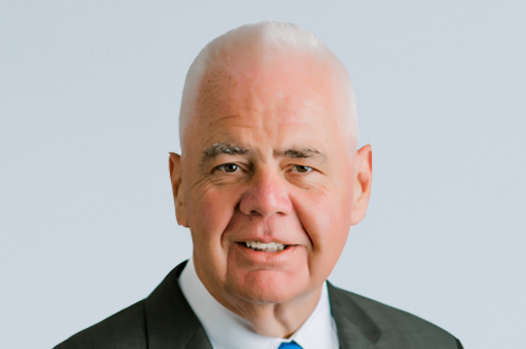
Stephen Rayment
CEO & Joint Group Managing Director, MEA, APAC & Australia

CEO & Joint Group Managing Director, MEA, APAC & Australia

Joint Group Managing Director
Scheduling is a crucial aspect of managing mega projects, which are defined as large-scale, complex ventures that typically cost over $1 billion, take many years to develop and build, involve multiple stakeholders, and have a transformative impact on millions of people. These projects are risky due to their lengthy durations and complex interfaces and are often prone to cost and time overruns.
Mega projects are characterized by a high-risk profile due to their lengthy durations and complex interfaces, which can lead to changes in the project team and leadership issues. Decision-making, planning, and management in these projects are typically multi-actor processes involving multiple stakeholders with conflicting interests, and technology and designs are often non-standard, leading to a "uniqueness bias" among planners and managers. There is also a tendency towards over-commitment to a particular project concept at an early stage, resulting in "lock-in" or "capture," and the scope or ambition level of the project will often change significantly over time. As a result, mega projects often suffer from misinformation or late information about costs, schedules, benefits, and risks, leading to cost overruns, delays, and benefit shortfalls with a potential for "black swans" or extreme events with negative outcomes.
To create an effective schedule for mega projects, it is important to have a clear project schedule specification, review plans and project documents, define project objectives and scope, establish a project management plan, identify the work breakdown structure (WBS), and create a detailed schedule. It is also crucial to monitor and control the schedule throughout the project, including regularly reviewing progress, updating the schedule as needed, and taking corrective action if necessary.
In addition, effective communication and collaboration with all stakeholders is essential for the success of a mega project. This includes establishing a clear project governance structure, maintaining transparency and open communication channels, and ensuring that all stakeholders are aligned on project objectives and aware of their roles and responsibilities.
Effective risk management is a key aspect of successful project delivery in the construction industry; there are several strategies that can be used to mitigate project delivery risk:
1.Develop a thorough understanding of the project: It is essential to have a clear understanding of the scope, requirements, and objectives of the project from the outset. This includes understanding the technical aspects of the project, as well as the regulatory environment and any potential risks or challenges.
2.Identify potential risks: It is important to identify potential risks early in the project planning process. This can be done through a risk assessment or risk management plan, which should identify the likelihood and impact of each risk.
3.Develop a risk management plan: Once potential risks have been identified, it is important to develop a plan to mitigate or manage them. This might involve developing contingency plans, allocating additional resources, or implementing risk reduction strategies.
4.Communicate with stakeholders: It is important to keep all stakeholders informed of potential risks and how they are being managed. This includes project team members, clients, contractors, and regulatory bodies.
5.Monitor and review risks regularly: It is important to regularly review and update the risk management plan as the project progresses. This will help to ensure that risks are being effectively managed and that any changes in the project scope or environment are taken into account.
6.Use a project management system: A project management system can help to identify and track risks, as well as provide tools for managing and mitigating them. This might include project scheduling software, risk management software, or other tools for tracking and reporting on project progress.
7.Choose experienced contractors and suppliers: Working with experienced contractors and suppliers can help to reduce the risk of delays or problems arising during the project. It is important to thoroughly vet potential contractors and suppliers to ensure that they have the necessary expertise and track record to deliver on the project.
When it comes to megaprojects, especially those related to the construction of subways and light rail systems, there are several key lessons that can be learned from projects around the globe. These lessons can help to ensure that future projects are more successful and avoid the common pitfalls that have plagued many past projects. Some of the key lessons include:
1.Assign the project team early, especially key elements, and ensure their availability for the full project period. It is important to have a strong and experienced team in place from the outset to ensure that the project is well-managed and successful.
2.Choose the right project delivery commercial model and delivery strategy. Different projects will require different approaches, and it is important to carefully consider the most appropriate model and strategy for each project.
3.Develop realistic estimates. One of the biggest challenges faced by megaprojects is the tendency to underestimate costs and overestimate benefits. It is important to develop accurate and realistic estimates to ensure that the project stays on track and is viable.
4.Actively manage project risks. Megaprojects are inherently risky, and it is important to have a robust risk management plan in place to mitigate these risks as much as possible.
5.Obtain senior management buy-in. It is essential to have the support of senior management, both within the organization and from any external stakeholders, to ensure that the project is successful.
6.Develop project-specific policies and procedures. Each project is unique, and it is important to develop tailored policies and procedures to ensure that the project is well-managed and successful.
7.Assign project-specific roles and responsibilities. It is important to clearly define roles and responsibilities within the project team to ensure that everyone knows what is expected of them and that the project is well-coordinated.
8.Have frequent team meetings. Regular team meetings are essential to ensure that everyone is on the same page and that any issues or concerns are addressed in a timely manner.
9.Finalize the project requirements and scope, and hence the design, as soon as possible to reduce risk in project delivery. The sooner the project requirements and scope are finalized, the less risk there is of changes or delays later on in the project.
10.Define the interface with ongoing and future projects at the project location. It is important to consider how the project will interact with any other projects that are happening in the same location and to plan for this accordingly.
11.Find competent subcontractors who deliver on time and comply with project standards and provincial regulations. Subcontractors can play a critical role in the success of a project, and it is important to choose ones that have a track record of delivering high-quality work on time.
12.Ensure availability of funding due to budget constraints. Funding is often a major challenge for megaprojects, and it is important to have a robust plan in place to ensure that the project has the resources it needs to be successful.
By following these tips and best practices, construction companies can increase the likelihood of successfully delivering mega projects on time and within budget and by being aware of these risks and taking steps to mitigate them this will increase the likelihood of the achieving the project objectives. It requires an experienced and collaborative team with the latest project controls tools to successfully apply these recommendations. To find out how we can support you, contact us.
